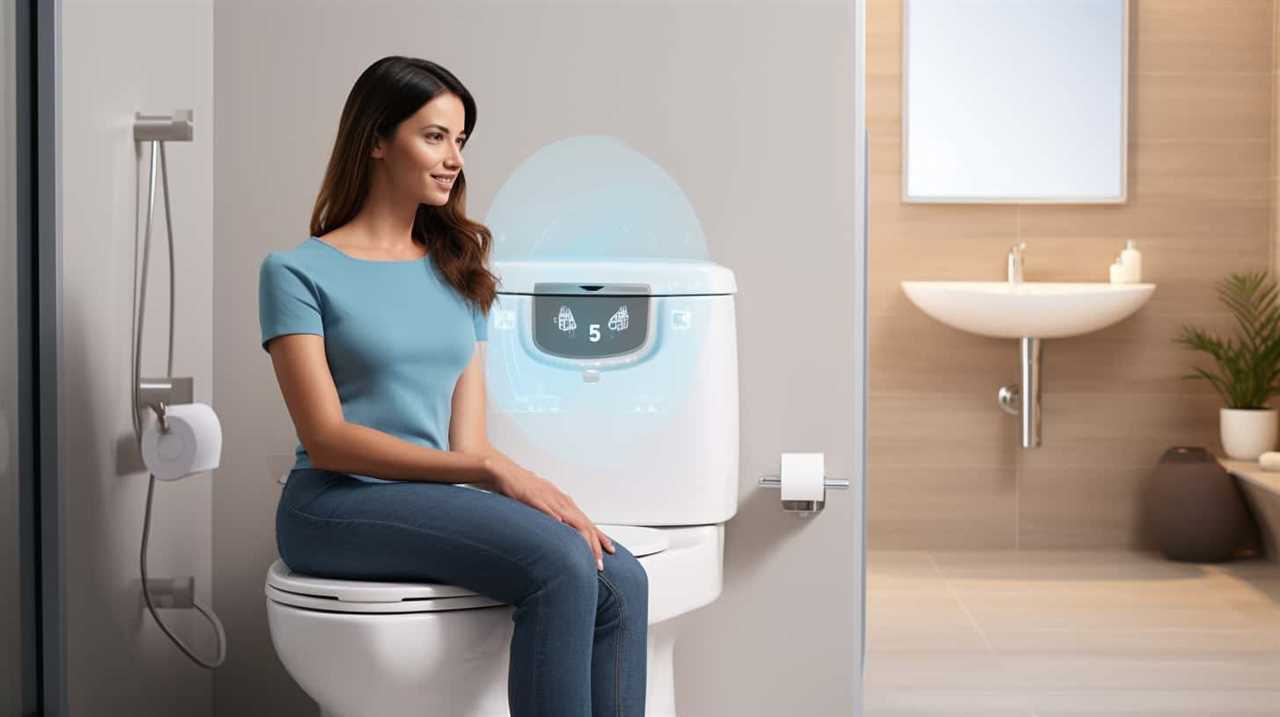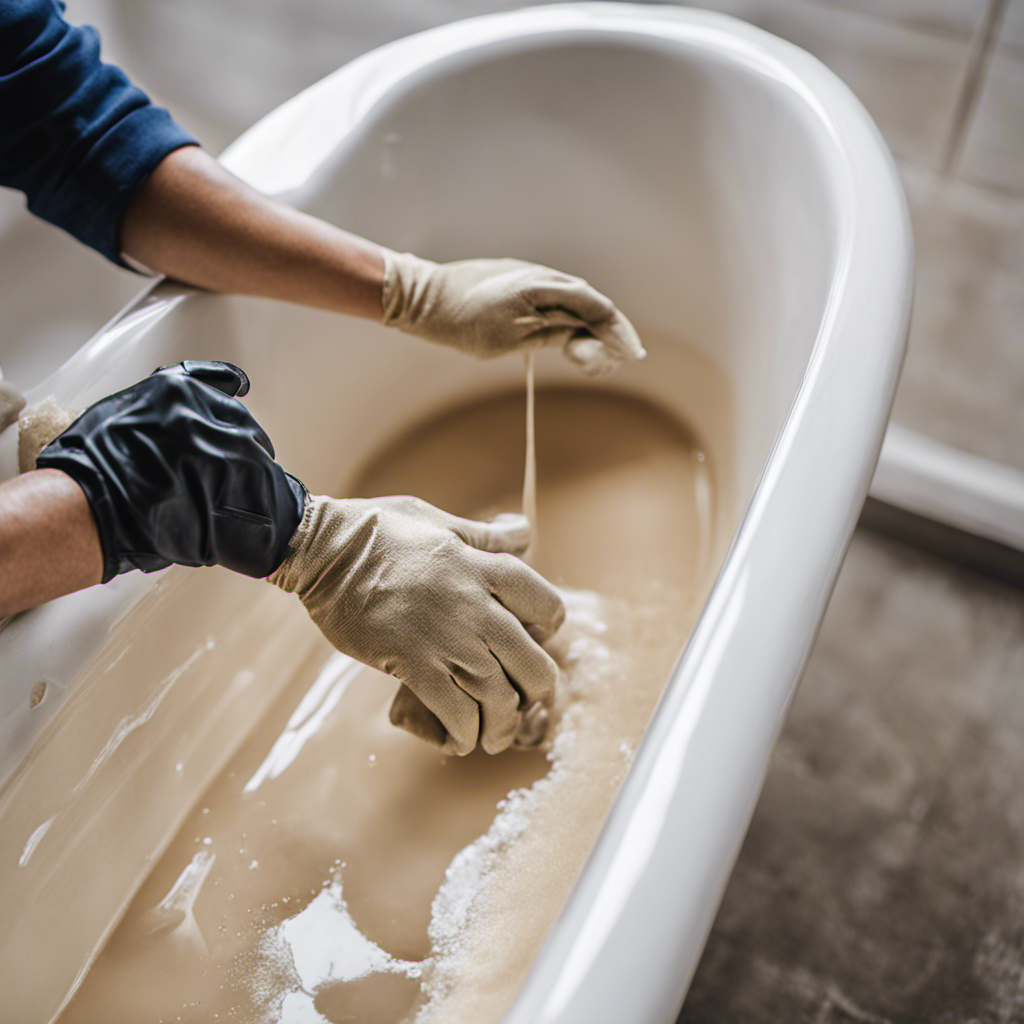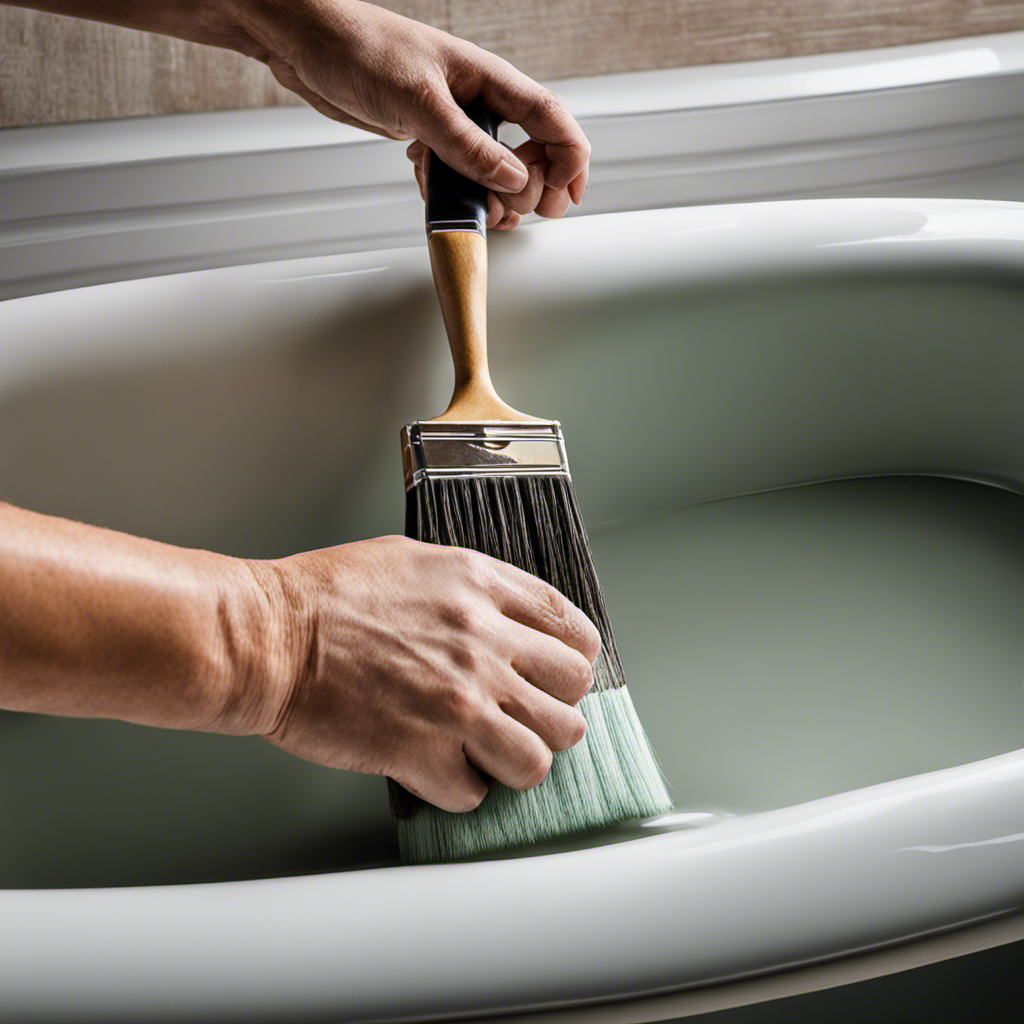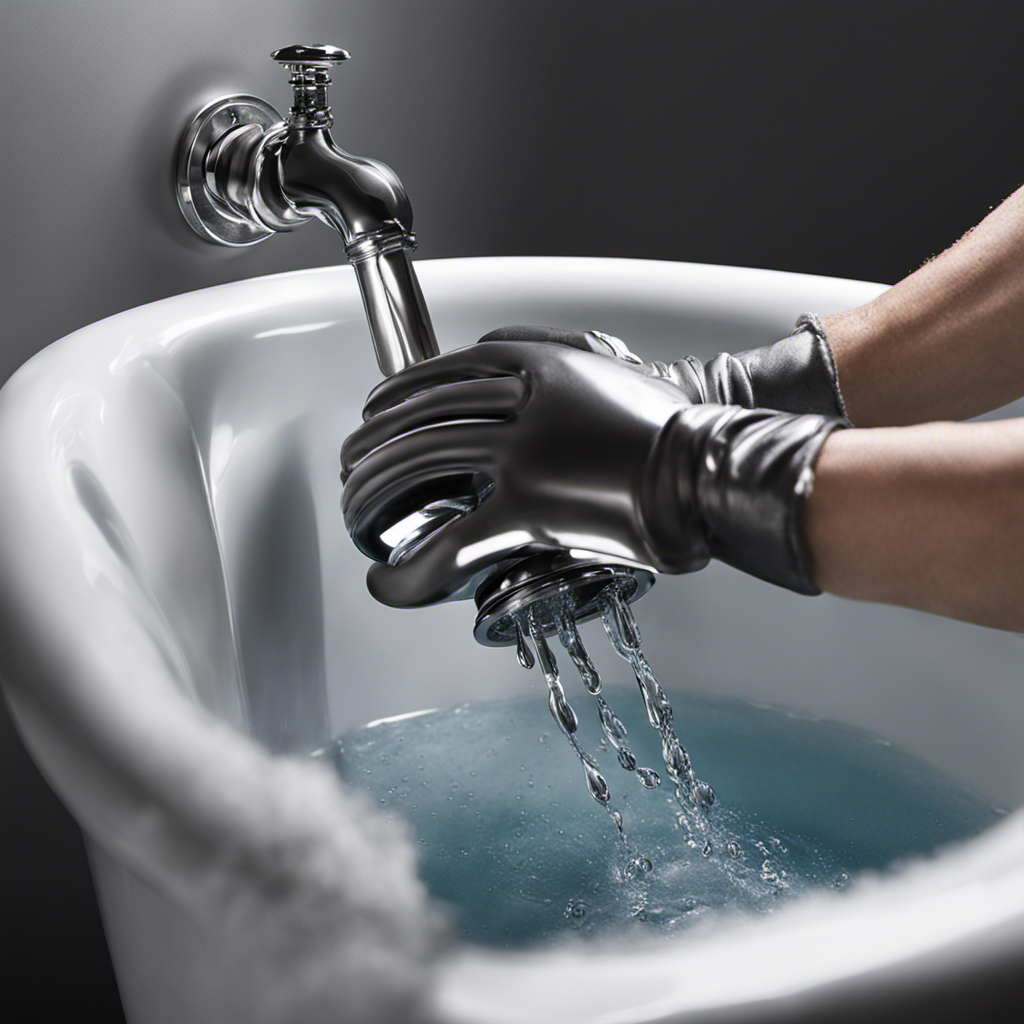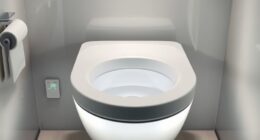Are you tired of struggling with stubborn, stuck jet covers on your Jacuzzi bathtub? Well, worry no more! In this step-by-step guide, we will show you how to effortlessly remove those pesky covers and regain control over your relaxing soak.
From the essential tools you’ll need to preparing your bathtub for cover removal, we’ve got you covered.
So, let’s dive in and discover the secrets to easily removing Jacuzzi bathtub jet covers.
Key Takeaways
- Screwdriver and pliers are essential tools for removing jet covers.
- Clean the jets thoroughly with mild detergent and a soft brush.
- Warm the covers with a hairdryer to make them easier to remove.
- Reattach the covers securely to prevent water leakage.
Tools Needed for Removing Jacuzzi Bathtub Jet Covers
To remove jacuzzi bathtub jet covers, you’ll need a screwdriver and a pair of pliers.
Before you begin, make sure the bathtub is drained and the power to the jets is turned off.
Start by locating the jet covers around the edges of the tub. Use the screwdriver to unscrew the screws holding the covers in place.
Once the screws are removed, gently pry the covers off using the pliers. Be careful not to damage the covers or the surrounding area.
Now that the jet covers are removed, you can clean them thoroughly using a mild detergent and a soft cloth.
If you notice any damage or wear, it may be time to consider replacing the jet covers.
Preparing the Jacuzzi Bathtub for Jet Cover Removal
Before you can start taking off the jet covers, make sure you have turned off the power to the Jacuzzi bathtub. This is an important safety precaution to avoid any potential accidents during the cleaning process. Once the power is off, you can proceed with the preparation steps:
- Gather the necessary cleaning supplies, such as a mild detergent, soft cloth, and a toothbrush.
- Remove any loose debris from the bathtub surface using a handheld vacuum or a soft brush.
- Fill the tub with warm water and add a small amount of mild detergent.
- Turn on the jets and let them run for about 10 minutes to allow the cleaning solution to circulate through the system.
- Turn off the jets and drain the bathtub.
Following these steps will ensure a thorough cleaning process and help maintain the proper functioning of your Jacuzzi bathtub.
Remember to always prioritize safety precautions to prevent any mishaps.
Step-by-Step Guide to Removing Jacuzzi Bathtub Jet Covers
Make sure you’ve turned off the power to your Jacuzzi bathtub before proceeding with the step-by-step guide for removing the jet covers. It’s important to take this safety precaution to avoid any risk of electric shock. Now, let’s dive into the process of removing the jet covers. Below is a detailed guide that will help you through this task.
| Step | Description |
|---|---|
| Step 1 | Locate the screws on the jet covers and use a screwdriver to remove them. |
| Step 2 | Gently pry off the covers using a flathead screwdriver or a putty knife. Be careful not to damage the surrounding area. |
| Step 3 | Once the covers are off, clean the jets thoroughly using a mild detergent and a soft brush. Rinse well to remove any residue. |
Alternative Methods: If you’re having trouble removing the jet covers using the above method, you can try using a hairdryer to warm the covers, making them more pliable. Additionally, applying a lubricant like WD-40 can loosen any stuck screws.
Common Mistakes: One common mistake is using excessive force when prying off the covers, which can cause damage. Another mistake is forgetting to clean the jets after removing the covers, which can lead to clogging or poor performance.
Tips for Dealing With Stubborn or Stuck Jet Covers
If you’re having difficulty with stubborn or stuck jet covers, try using a hairdryer to warm them, making them easier to remove.
Here are some additional tips to help you deal with stubborn or stuck jet covers:
-
Apply a lubricant: Use a silicone-based lubricant or WD-40 to loosen the jet covers. Spray the lubricant around the edges and let it sit for a few minutes before attempting to remove the covers.
-
Use a suction cup: Attach a suction cup to the center of the jet cover and pull firmly to create suction. This can help break the seal and make it easier to remove the cover.
-
Tap gently: Use a rubber mallet or the back of a screwdriver to tap lightly around the edges of the jet cover. This can help loosen any debris or buildup that may be causing it to stick.
-
Twist and pull: Apply gentle pressure to twist the jet cover counterclockwise while pulling it upwards. This twisting motion can help break the seal and make it easier to remove.
-
Seek professional help: If all else fails, it may be best to contact a professional plumber or technician who specializes in jacuzzi bathtubs to assist with removing stubborn or stuck jet covers.
Proper Maintenance and Care After Removing Jacuzzi Bathtub Jet Covers
After cleaning and inspecting the jets, don’t forget to reattach the covers securely to prevent any water leakage. Proper maintenance and care are essential to ensure the longevity and optimal performance of your Jacuzzi bathtub. Cleaning techniques for the jet covers involve removing any accumulated debris or mineral deposits. Gently scrub the covers using a non-abrasive cleaner and a soft brush. Rinse thoroughly to remove any residue. Inspect the covers for any signs of damage, such as cracks or warping. If any issues are found, it is important to replace the covers to prevent further damage to the jets. By following these cleaning techniques and preventing damage, you can enjoy a clean and efficient Jacuzzi bathtub for years to come.
| Cleaning Techniques | Preventing Damage |
|---|---|
| Remove debris and mineral deposits | Inspect covers for damage |
| Scrub gently with non-abrasive cleaner | Replace damaged covers |
| Rinse thoroughly | Prevent further damage to jets |
Frequently Asked Questions
How Long Does It Typically Take to Remove Jacuzzi Bathtub Jet Covers?
To safely remove Jacuzzi bathtub jet covers without damaging them, follow these tips for removing stubborn covers quickly and efficiently. The time it takes can vary depending on the cover’s condition and your experience.
Can I Use Regular Household Tools to Remove the Jet Covers?
You can use regular household tools to remove the jet covers. Start by locating the screws or clips holding the covers in place. Use a screwdriver or pliers to loosen and remove them.
Are There Any Safety Precautions I Should Take When Removing the Jet Covers?
When removing jet covers, it is important to take safety precautions. Use the best tools for the job such as a screwdriver or wrench. Wear protective gloves and goggles to prevent injuries.
What Should I Do if the Jet Covers Are Damaged During the Removal Process?
If the jet covers are damaged during removal, first ensure your safety by turning off the power. Then, assess the extent of the damage. If repair is not possible, search for replacement jet covers from the manufacturer or authorized dealers.
Is It Necessary to Remove the Jet Covers for Routine Maintenance and Cleaning?
To properly maintain and clean your Jacuzzi bathtub, it is necessary to remove the jet covers. However, caution must be exercised to avoid damaging them. Alternatively, you can explore other methods for cleaning and maintaining your jacuzzi bathtub.
Conclusion
So now you know how to remove jacuzzi bathtub jet covers!
By following the step-by-step guide and using the necessary tools, you can easily remove these covers to clean or replace them as needed.
Remember to always prepare the bathtub beforehand and be cautious of stubborn or stuck jet covers.
With proper maintenance and care, you can keep your jacuzzi bathtub in top condition.
So go ahead and give it a try – your clean and functioning jacuzzi jets await!

